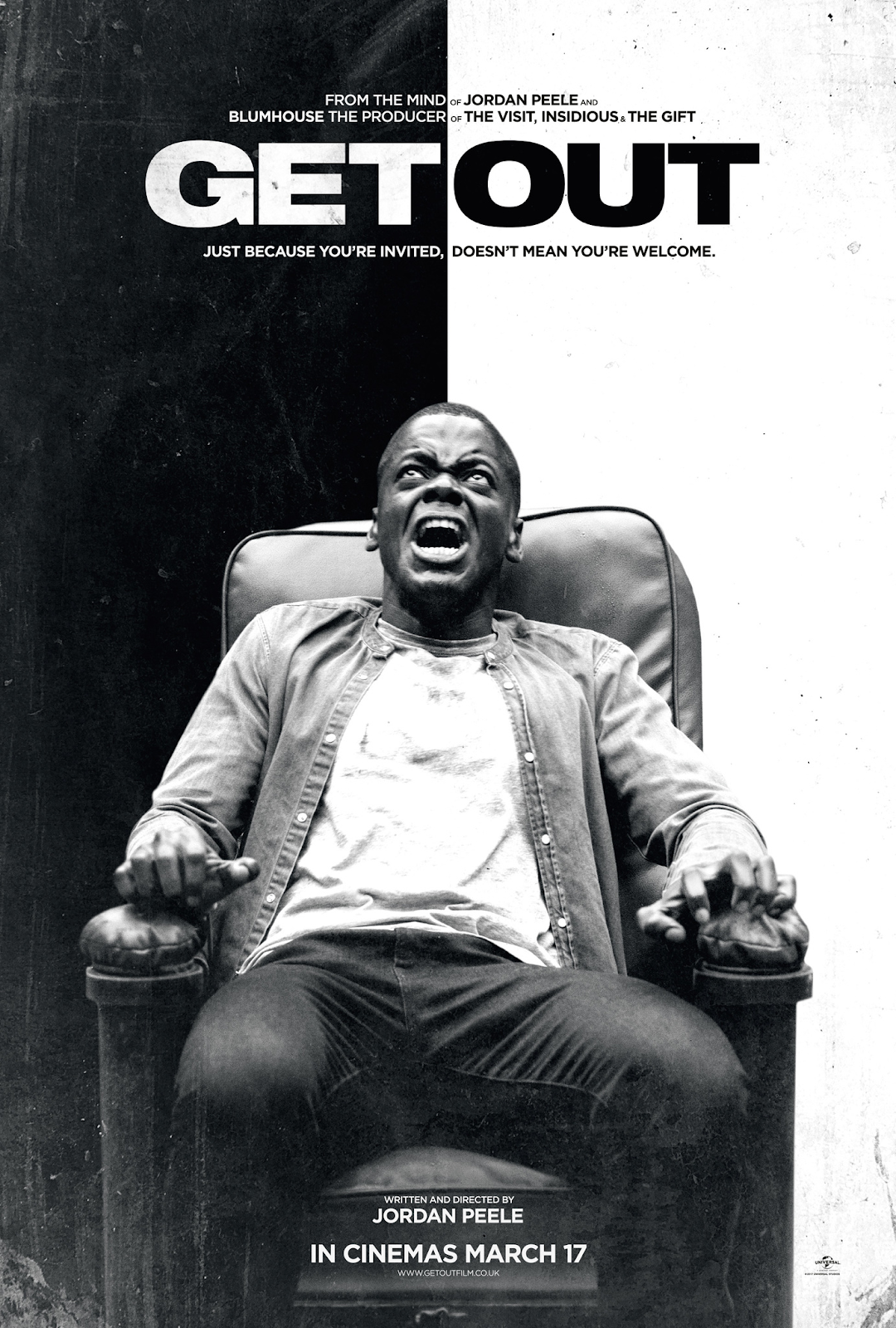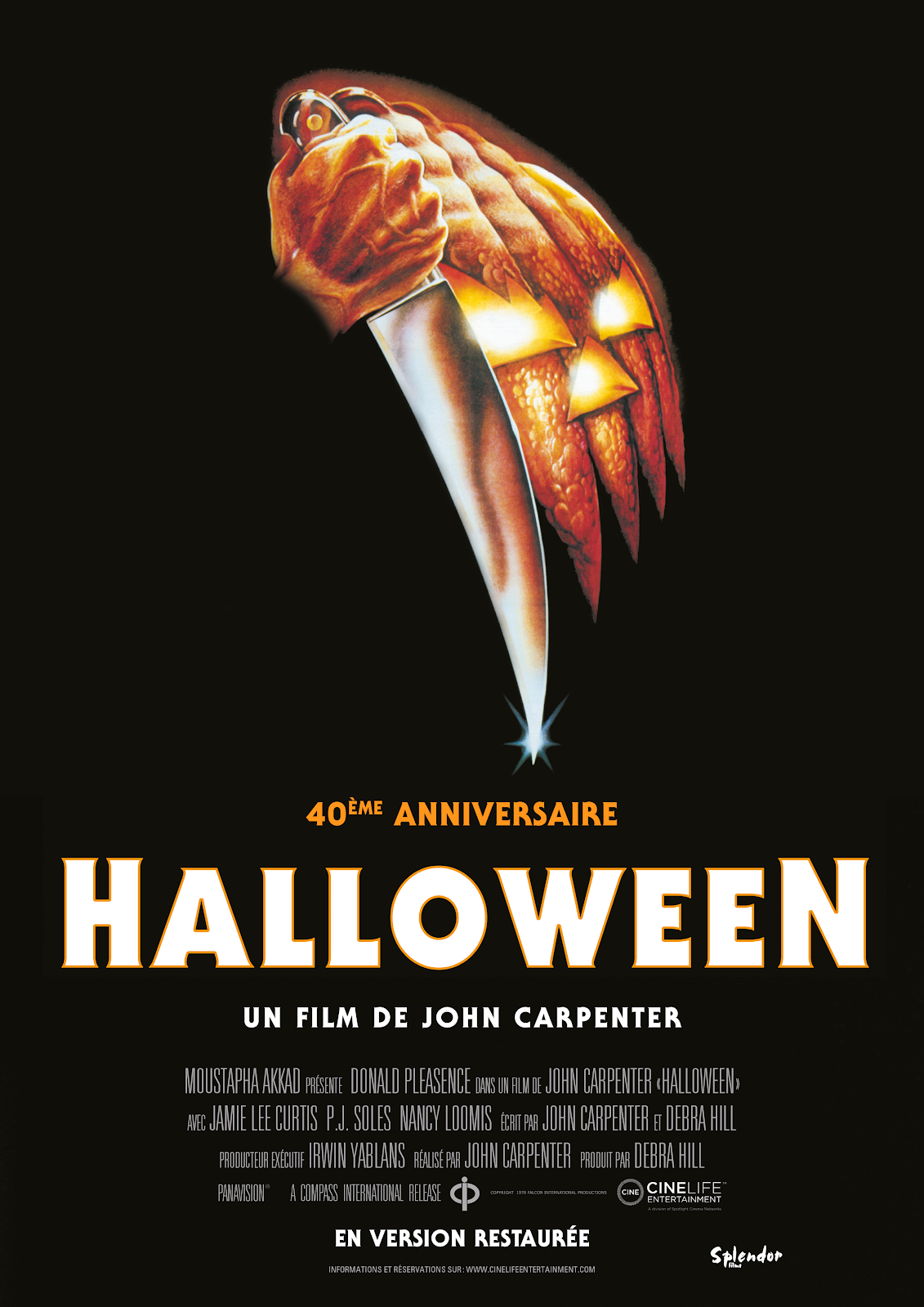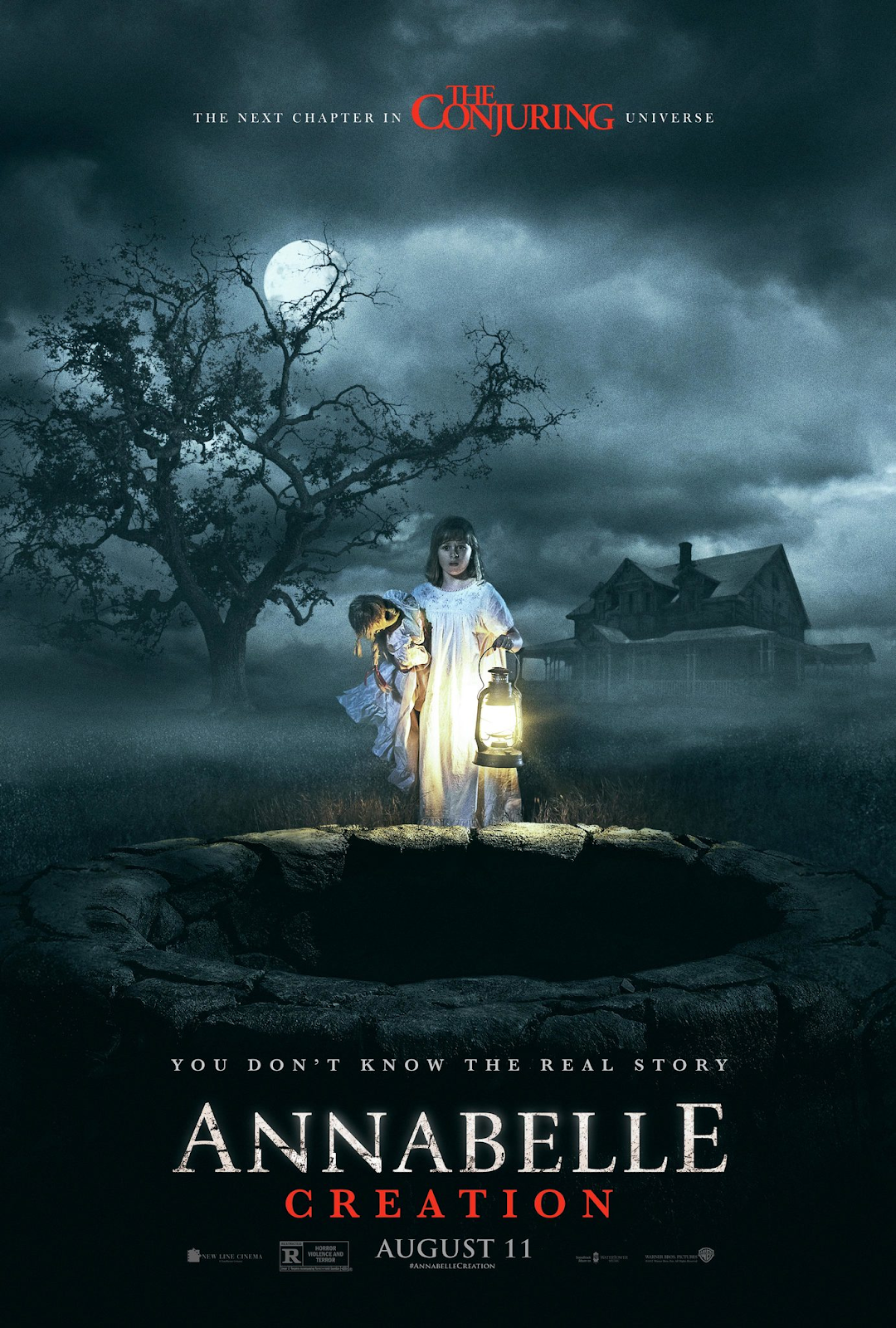What is Horror?
Seeing as how Halloween is tomorrow I see no better time than to talk about the genre associated with my childhood trauma and fear of the dark, Horror.
Horror at its most basic level is a genre that aims to scare, shock, and thrill its audience. This is often done with the usage of a villain, monster, or threat of some kind that represent the fears the audience viewing the production may have. Horror has stayed relevant throughout the ages by evolving with its audience, as the audience's fears change the movies being produced change to adapt to those fears. So, although not for the faint of heart horror is extremely popular and brings in high amounts of revenue, especially around Halloween.
Content:
The dark and ominous settings in horror productions are a staple in the horror genre. It can almost be said that the horror genre is directly tied culturally to its setting. For example, places like graveyards, isolated households, and the woods just scream horror to the audience, and they elicit a feeling of dread whenever they are in the setting of a movie. The setting helps to build the atmosphere of dread and fear in the horror genre and is one of the most important parts of the genre as a whole.
EX: In
The Shining the setting is presented to the audience as an isolated hotel where madness encapsulates its residents and the setting makes it feel like there is nowhere to run and no one to help to create the perfect setting for fear.
The characters used in horror productions have also become a staple in the genre. It is typical in these productions to be presented with groups of characters like families, friends, or random strangers brought together. These groups of characters are all relatable to the audience and have become synonymous with the genre. The use of groups like families and friends especially, allows the audience to relate to the situation and feel sympathy for the characters as the audience themselves can picture themselves in a desperate situation to survive with their own friends or family. The use of groups also helps to provide sentimental attachment to the characters through their interaction which allows the audience to figure out who each character is and develop attachments toward them. These attachments and connections built using the characters all help in the movie's goal of bringing about fear and thrill as the audience has to struggle with the reality of their characters being axed off as the movie progresses.
EX: In the movie
Annabelle: Creation a group of young girls and their foster parents are presented to the audience. As the movie progresses we come to learn about all the character's traits and motivations which makes it all the harder to watch as we see these characters get killed one by one by the evil spirit.
Out of all the horror movie conventions, the use of a monster that cannot be reasoned with and also has extreme amounts of power over the characters is the most prominent and unchanging convention of the genre of horror. Making it so the monster or enemy of the film cannot be reasoned with aids in the film's ability to elicit fear since there is no easy solution to the problem. The enemy in horror has the goal of killing the characters and nothing will stop them from attempting to achieve this goal. Added to the enemy's unstoppable nature is the fact that they typically are more powerful than the other characters making it so that violent means are typically ineffective at stopping them permanently. These 2 factors make it so the audience and the characters can not provide an easy solution to the problem they are faced with and thus the audience is at the edge of their seats riddled with fear and awe in seeing if and how the characters get out of the situation. These feelings build off of other conventions like the setting and the characters.
EX: In the
Halloween series Micheal Myers is presented as an unstoppable killing force that does not even go down to stab wounds and guns and even when he does go down he always returns somehow making it seem like an unending nightmare and a terrifying situation for both the characters and the audience.
All these conventions culminate together with the use of a common plot present in most to all horror productions. Tropes like a family moving into a new neighborhood, ghosts wanting revenge, monsters appearing out of nowhere, and murders on the loose are all typical plot threads used when making a production in the horror genre. Although they are considered to be cliche these details all help to build suspense in the audience that is viewing the productions and help build up the fear that horror aims to present to its audience. The endings can go either way. Providing closer by allowing the characters to win against the evil or it can provide the sense of utter hopelessness and fear with the characters losing or the villain getting away to continue to wreak havoc like nothing even happened.
EX:
IT and its sequel
IT Chapter 2 both utilize tropes in their presentation of a horrific story. The clown Pennywise is portrayed as an unstoppable monster that appears out of nowhere and has a past with the town and tormenting kids. The characters are a group of friends who have to come together to combat the creature. After the events of the first movie, the monster is still out there no matter how much effort the kids put in, and when they are adults they are drawn together by the creature once more and they finally win after many casualties.
Production Techniques:
In the horror genre throughout the production, lighting is a key tool to increase the audience's suspense and fear. Lowkey lighting creates harsh shadows to make the scene and the subject looks more scary and dramatic. This creates tension for the viewer as the unknown and darkness elicit a feeling of dread and suspense for the viewer which aids in horror's purpose of creating fear. Silhouettes are also used for the same purpose and further portray the mystery of the enemy to the audience adding to the suspense and terror.
EX: In
Friday the 13th, the use of low-key lighting makes scenes in which Jason Vorheise is present more suspenseful and terrifying for the audience.
Sound is used prominently in the horror genre to create suspense. The usage of off-screen sounds like growls, screams, and heavy breathing helps to give the audience the feeling that there is something watching and something is wrong. Intense soundtracks and stings when something bad is going to happen builds tension and puts the audience on the edge of their seat when watching. Without music, many scenes would fall flat due to a lack of suspense.
EX: In
Jaws, the classic sting used whenever the shark appears on screen signifies to the viewer that an attack is about to occur. The viewer's suspense is built up as the sound gets faster and faster till the attack where the tension and fear are released.
Horror movie cinematography using perspective shots, tracking shots, wide shots, extreme close-ups, distorted shots through objects, shaky handheld shots, and foggy shots all help to give a horror production its signature feel. Close up for example help to show the character's dread and terror which then reflects back onto the audience's own for what will/is happening to them. Shooting through objects to create a distorted view gives the sense of being watched creating unease. In the same way tracking or panning shots are also used to create the same sense. Low angles and high angles help to demonstrate the power of the characters in a scene. Typically these angles are used to make the characters feel weak while the monster seems strong building onto the hopeless nature of the situation that is created. Handheld cameras put the audience in the character's shoes and since the character's in the scene are scared the audience is made to feel the same way by being put in a similar situation visually.
EX: In
Get Out the close-up on Chris Washington's face in this scene helps the audience see all of the details and truly see the state of despair and terror he is in.
Marketing:
The target audience of the horror genre is males aging from 15-25. Males are chosen because they have been found to enjoy blood and gore more than other genders. Young adults ranging from 15-25 typically, enjoy horror movies more than any other age range. Younger people most typically enjoy thrills and scares that come with horror than other age ranges. Also, older audiences cannot take the intense visuals and reactions they create in viewers.
Many different unique marketing techniques are used to promote horror productions. A technique commonly used is by creating a mystery about a horror production.
The Blair Witch Project was marketed with fake missing posters and had a website that had 20 million views on it. This created mystery and intrigue around the production resulting in its high popularity.
IT also used this strategy of creating mystery by placing red balloons everywhere in cities which had the same effect as the Blair Witch Project had. Additionally, movie posters and movie trailers that show interesting plot details are used to create further anticipation for these movies.
Film Samples:

IT (2017) is a film adaption of Stephen King's novel It. The movie follows The Loser's Club, a group of 7 loser kids, being terrorized by the monstrous clown Pennywise. Pennywise aims to make the children in the club consumed with fear by utilizing their worst fears against them showing them illusions of them.
IT illustrates many of the horror genre's characteristics by having a lot of gore and suspense in almost every scene. The film begins with Georgie, a small child, going to get his paper boat that is about to go into a drain but Pennywise is shown in the drain covered in blackness and rips his arm off dragging him into the drain. This only sets the scene for the tone of the film going forward where more terrifying visuals are shown. The character design of Pennywise also adds to the overall tone of the film using the fear of clowns and turning that fear to 1000% with the added demonic characteristics of the killer clown. Finally, the dark settings during many of Pennywise's attacks create an intense atmosphere and build onto the fear that is induced in these scenes. The poster with the clown in the dark with a child staring up at a dimly lit Pennywise holding a balloon creates a mystery about the film and also fear about what is in the dark. This movie really is a perfect example of horror and should be watched by everyone.
Get Out (2017) is the story of a man named
Chris Washington going to meet his girlfriend's parents. The tone then takes a nose dive into darkness when his girlfriend's dark secret is revealed. That secret is that his girlfriend's parents sell the black men she dates into slavery. The film is definitely horror with creepy scenes that really mess with the viewer's mind. As Chris tries to "GET OUT" of the situation he has been put in. The use of close up like the well-known close-up crying scene above really shows that the movie understands what it is doing and knows how to show the feelings of dread and hopelessness that the characters feel. Foreshadowing is also used well when even before Chris arrives at his girlfriend's house they hit a deer which shows that things are not as they seem and something dark is about to happen. This film is a very good and is a contrast to the previous section of It as it is mostly psychological but is just as scary.
Other Notable Films:
Sources:
https://www.qualitylogoproducts.com/blog/5-horror-movie-marketing-tactics-you-can-steal-for-your-brand/
https://digitalcommons.liu.edu/cgi/viewcontent.cgi?
article=1030&context=post_honors_theses#:~:text=Chapter%202%2C%20“Mise-en,scene%20and%20create%20specific%20techniques.
https://raindance.org/6-common-horror-film-tropes/
https://www.studiobinder.com/blog/what-is-horror-definition/
https://www.slideshare.net/Amber2805/conventions-of-the-horror-genre-67172644
https://www.savannahgilbo.com/blog/horror-conventions














No comments:
Post a Comment